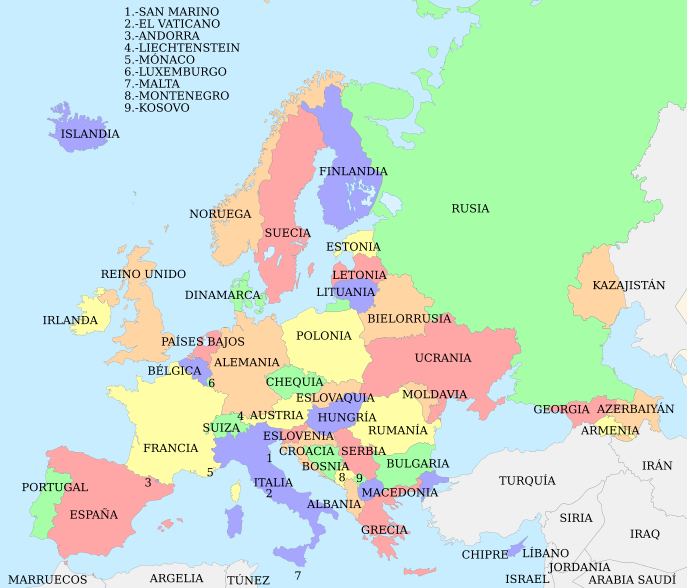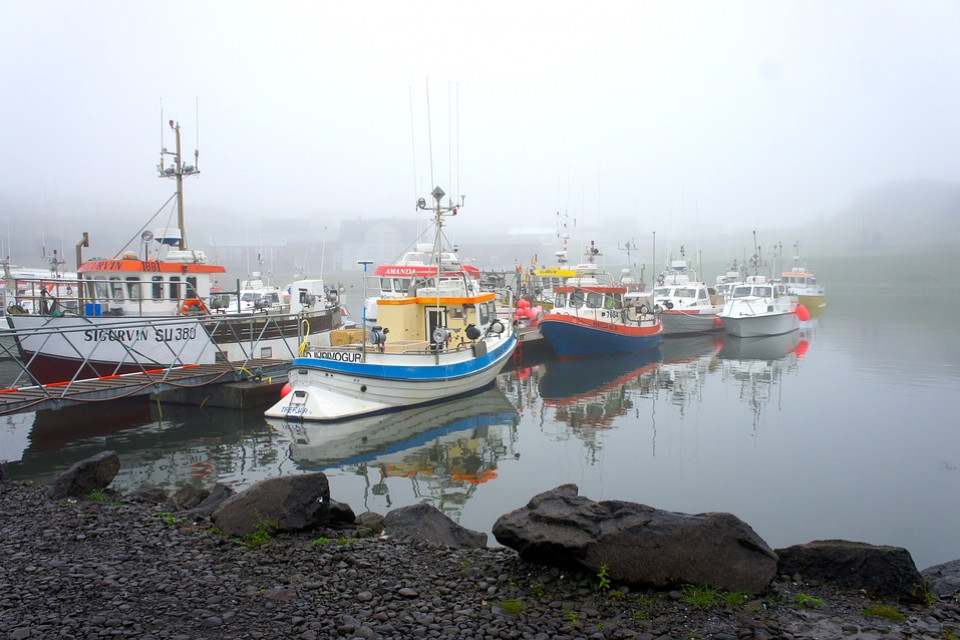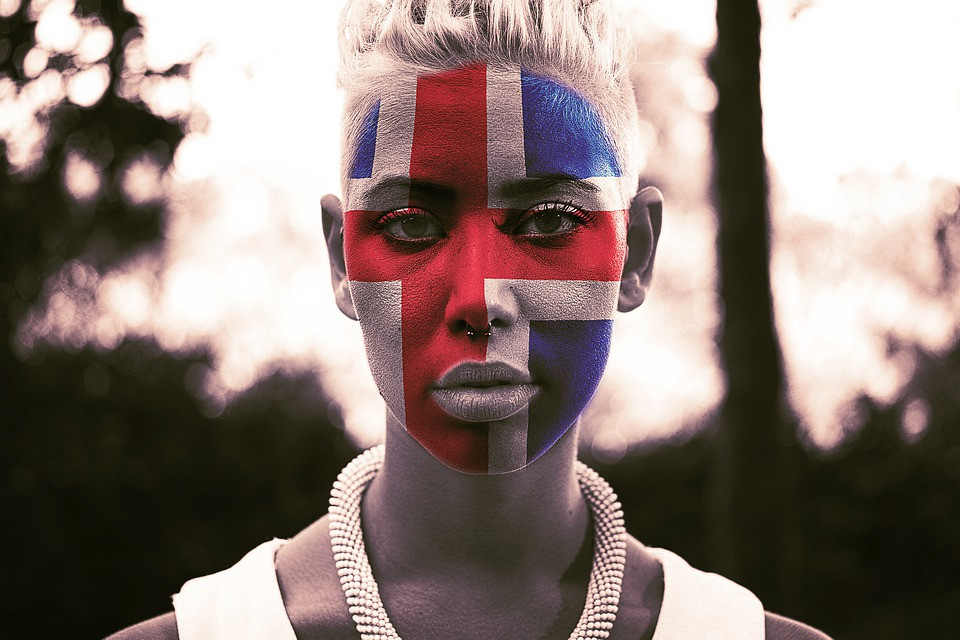What do Iceland and Spain have in common? Two countries so obviously different and so far apart: one Nordic, Lutheran, peaceful, lost in the periphery of the Atlantic, characterized by the culture of work and the other, culturally Catholic, southern, affected by a European history of wars and focused on the good live as well as a leisure culture. Well, the answer is unusual, they have much more in common than it initially seems.
Surprisingly, both Spaniards and Icelanders discover that many features of our character are common to both: the passion for life, an overflowing energy (particularly when the sun shines), improvisation, lack of organization and planning, trusting that things they will get fixed by themselves, and, above all, an innate creativity, an ultimate trust that leads to finishing the projects at the last moment in a ingenious and brilliant way. Surprising, yes, that Iceland and Spain look alike in some things.
Despite obvious differences, these two societies have had to solve similar challenges and problems after fighting against, either radically in 2008 or more gradually during 2008-2018, different crises: financial, economic, social and political.
Ten years have passed since then. What have we learned during this time?
Without going into details, both countries had a serious and urgent problem, how to deal with a great depression: which meant adjusting their life-style, balancing the exports/imports balance of payments, rescuing their domestic financial sector and restructuring their banking sector (savings banks in Spain), deal with a public debt of around 100% of GDP, and reduce a problem of over-indebtedness of the private sector, in addition to other issues.
Although the consequences of the crisis on the economy were not as different as it might seem in principle, it is a subject with variations.
In Iceland, the loss of employment due to an emigration to Scandinavia and developed countries (loss of two generations) was contained but the private debt skyrocketed (due to the indexation of credit and mortgages to foreign currencies and the inflation that followed the brutal devaluation of the currency). In Spain, the nominal debt in Euros remained stable but jobs and income were lost. In both cases, the consequences were similar: at the macro level the economy contracted and at the micro level families and companies could not balance income and expenses, many families lost their homes and went bankrupt or lost their homes and businesses. Without the private sector driving the economy aeroplane, only those of the public sector and export were left to provide the power. A difficult challenge for both countries.
Nevertheless, it was the different methodologies that were adopted as well as external factors that distinguished these two societies and those that have allowed Iceland to recover miraculously in a decade, and Spain to undergo a long process of adjustment perpetually and still on the verge of stagnation.
Outside the European Union and the Eurozone (despite being in the European Economic Area together with Norway and Liechtenstein), Iceland adopted drastic solutions justified by the emergence of the situation: devaluation of its local currency, the Króna (about 50%), intervention of the International Monetary Fund (IMF) and restrictions on the free movement of capital (basically to ensure the survival of the Icelandic Króna). Even so, there was social consensus to try to protect the most disadvantaged as far as possible. Spain, within the European Union and having lost its monetary sovereignty to the Eurozone, had to proceed to an equally painful internal devaluation: unemployment, wage adjustment, labour reform and precariousness, cuts in education, health and social policies. The austerity imposed by the demands of the governance of the Euro led to an increase in inequality, which affected particularly the most vulnerable.
From there, everything diverges. Iceland rises from its ashes aided by its rich natural and energy resources as well as by an independent monetary and fiscal policy and, above all, by reinventing itself as a new tourist destination after the 2010 eruption of the Eyjafjallajökkullen volcano.
It went from receiving 300,000 tourists in 2001 to more than 2 million in 2018.
After a few difficult years, Iceland returned the loan to the IMF and froze the process of joining the European Union that began in 2009. It entered a new spiral of growth that seemed to slow down in 2018.
Of course, this did not mean that the Icelandic economy is free from problems. High inflation and periodic crises are structural. Its lack of synchronization with the Eurozone is due to the fact that it is an emerging economy, with more growth but more risk (if only because it has the smallest independent currency in the world, backed by only 350,000 inhabitants).
It is a "roller coaster" economy, exciting but vulnerable and unstable, which in addition corresponds to a quite young country whose average age is around 36.
Spain, despite its great potential and considerable assets as a society and economy, is still hampered by problems that are difficult to solve: high unemployment, particularly the youth, job insecurity, ageing of the total population, unsustainability of the pension system, and so on.
If we had to find the fundamental difference between economic policies, perhaps the essential factor is that Spain taxes labour with direct social charges (which leads to ex-ante unemployment); while Iceland gives work almost all of its people through reduced charges and taxes instead ex-post consumption, leisure, social life (which for many would be tantamount to taxing the "good living"). Together with the social charges that in one case tax work and in the other are collected mainly through indirect taxes; Spain has an intergenerational and collective pension system while Iceland has an individually funded pension system (mandatory by law). It could be said in this way, forcing the argument somewhat, that Spain structurally creates unemployment while Iceland leads to other problems no less serious (higher import taxes of depression and anxiety, which is consistent with data on consumption of certain medicines according to the OECD). Geography, latitude and climate of course exaggerate the differences between a Mediterranean economic leisure policy and a Nordic work policy. But, along with the climate, economic and fiscal incentives are a significant proportion of public policies.
Still, no model is perfect, it ultimately depends on life preferences as a society.
However, once again, and in spite of the differences, the crisis has highlighted how the challenges and turbulence that await us as societies are common since they are questions that this new century confronts us with: how to reform productive economic matrices based excessively in tourism and low productivity and low paying jobs; how to build models of sustainable and inclusive economies that, based on human capital and fundamental rights, respect the limits and resources of our planet; how to deal with the challenges of a widespread political fragmentation and new emerging parties; how to improve our representative democracies with greater citizen participation; how to reform constitutions somewhat outdated by the escalation of history; how to value the income from the work of individuals and capital and of multinational companies more fairly in this new economy; how to redistribute resources among the more or less needy individuals, depopulated regions and the emerging/crisis sectors; how to reconcile a cosmopolitan and humanitarian vision of law with an equally necessary community dimension, based on an identity, common language and territory; how to deal with a populism of accurate analysis and demagogue and impossible promises. In the end, how to improve the standard of living of the public at large and solve their real problems.
Because in both countries the crisis has produced the same effect: an abyss between a privileged political class that lives in its bubble of partisan and sectoral interests and a class of indignant citizens, scandalized and tired of seeing how that re-foundation of capitalism that was promised after the crisis has never materialized. Ten years after the crisis, both the average Icelander and the average Spanish have learned this: nothing fundamental has changed, and everything remains fundamentally the same.











